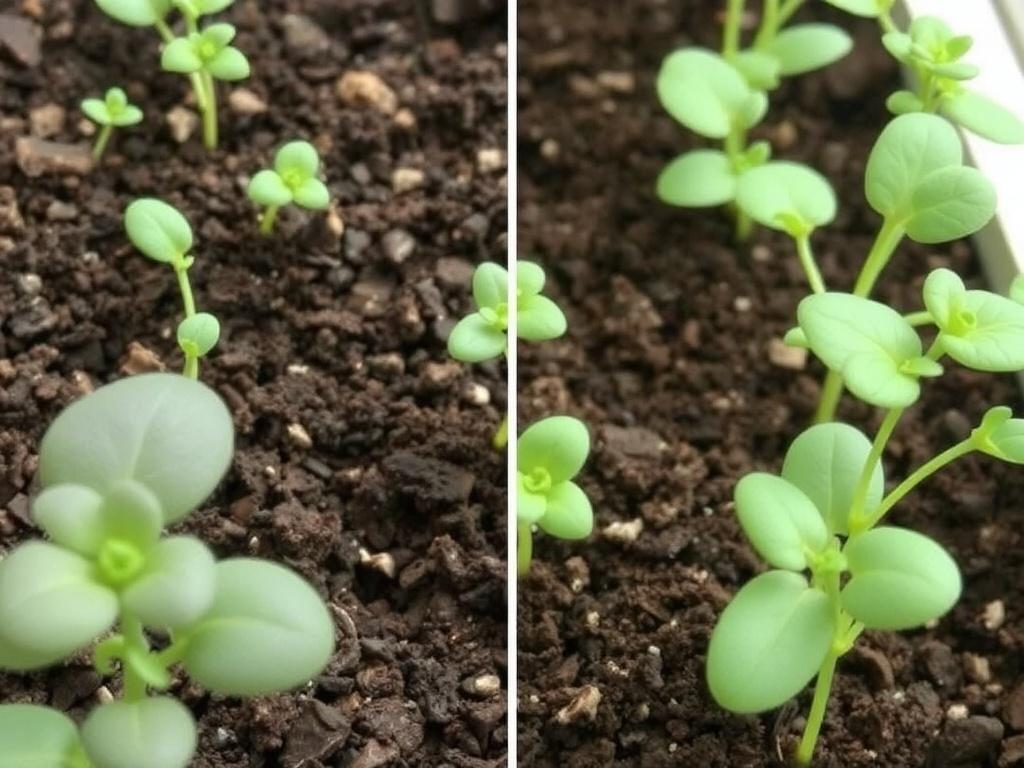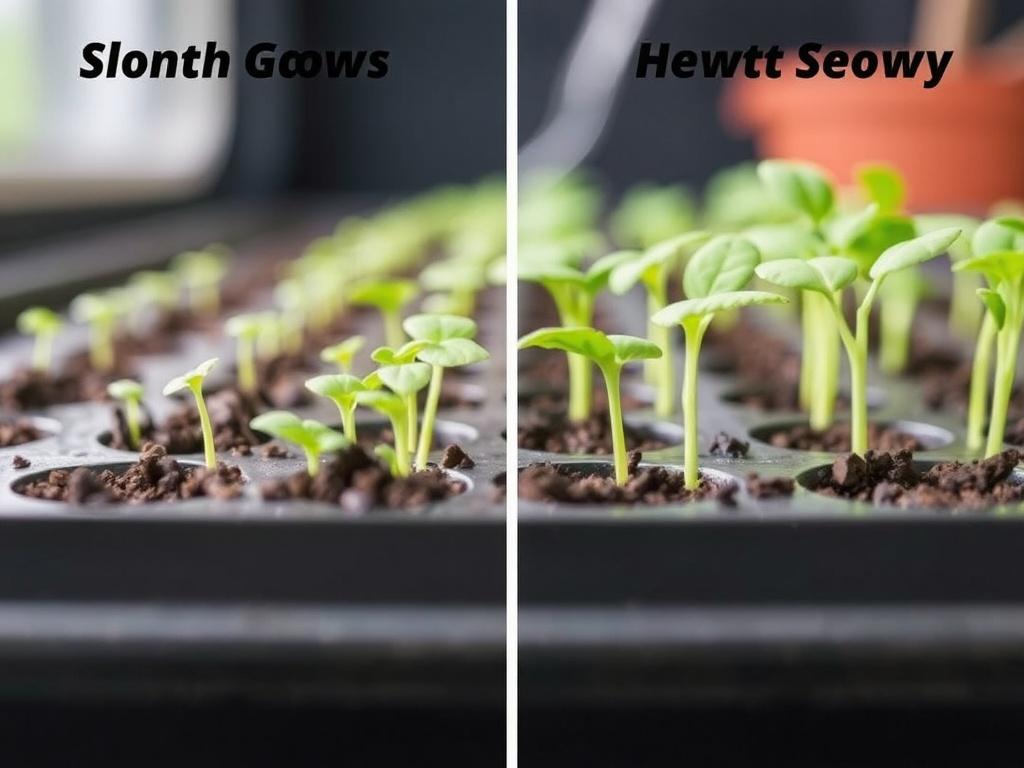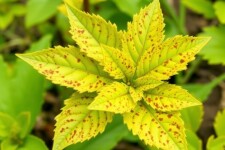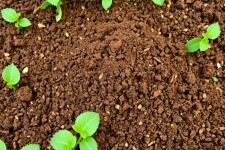Planting is part art, part science, and all about timing. If you’ve ever stood over a packet of seeds wondering whether to start them indoors or sow them directly in the garden, you’re in good company. Semis intérieur (indoor sowing) and semis direct (direct sowing) each have loyal advocates and clear cases where one method simply works better than the other. This article is a friendly, thorough exploration of both approaches: what they mean, why they matter, how to do them successfully, and how to decide which method fits your plants, climate, time, and goals. We’ll walk through the practical steps, highlight common pitfalls, and show how to plan a season that gets your rows full of healthy, thriving plants.
Think of this as a long conversation with a gardener friend. I’ll explain the basics, compare the pros and cons, share step-by-step instructions, and give realistic tips for everyday gardeners. Whether you’re a beginner planning your first vegetable patch or an experienced green thumb refining your approach, you’ll find practical guidance and the “when and how” for both semis intérieur and semis direct.
What does semis intérieur mean and why do gardeners use it?
Semis intérieur means starting seeds indoors — in a protected environment such as a greenhouse, cold frame, windowsill, heated seed tray, or grow tent — before the outdoor growing season begins. The technology ranges from a sunny kitchen windowsill and recycled yogurt pots to professional propagation benches and sophisticated grow lights. The point is to give seedlings a head start when the outdoor soil is too cold, wet, or otherwise inhospitable for germination and early growth.
Gardeners use semis intérieur for several reasons. First, it extends the effective growing season. Some vegetables and ornamentals require more time to develop enough leaves, flowers, or fruit than your local summer will comfortably allow. Second, it helps overcome late spring frosts and unpredictable weather. Third, starting seeds indoors reduces seedling loss to pests like slugs and the pressure from weed competition. Fourth, indoors you can control light, temperature, and moisture more consistently, which boosts germination rates and early vigor.
Using semis intérieur does require more attention and equipment than throwing seeds into the garden, but it can be the difference between a few early tomatoes and a bountiful harvest that makes neighbors ask for your recipe.
What does semis direct mean and why might it be better?

Semis direct, or direct sowing, simply means planting seeds directly into their final outdoor location without transplanting. This traditional approach mirrors how nature often handles plants: seeds drop, the season warms, and the seedlings establish themselves where they’ll grow to maturity. For many crops, direct sowing is simpler, less labor-intensive, and often results in stronger root systems because the plants are not disturbed by transplanting.
Direct sowing is preferred for several reasons. It is less time-consuming and requires minimal equipment — sometimes just a trowel, a rake, and your hands. It reduces transplant shock and root disturbance, which benefits crops like root vegetables and legumes. Direct sowing can also align better with ecological principles because you avoid the extra inputs (plastic trays, heat mats, grow lights) and potential waste associated with indoor starting. For many small-scale and low-maintenance gardens, semis direct is the most sustainable and practical choice.
However, direct sowing depends heavily on soil conditions and weather. Cold, compacted, or waterlogged soils can delay or prevent germination. Pests and heavy rainfall can wash seeds away. The method thrives in gardens with good soil preparation, stable spring weather, and crops adapted to local climate.
Advantages and disadvantages: a clear comparison
Both methods have clear benefits and trade-offs. Understanding them helps you choose the right approach for the right crop and the right season. Below is a comparative look at advantages and disadvantages to help you decide.
Semis intérieur advantages
Semis intérieur disadvantages
| Semis intérieur (Indoor sowing) | Semis direct (Direct sowing) |
|---|---|
|
|
|
|
These trade-offs are the practical starting point for choosing a method. The rest of this article will unpack factors like crop type, climate, timing, technique, and troubleshooting to help you apply these principles in your garden.
Which crops prefer semis intérieur and why?
Some crops almost always benefit from semis intérieur. These are usually plants that love heat, have a long time to maturity, or are slow to germinate in cool soil. Here’s a practical list and the reasons behind the recommendations.
- Tomatoes and Peppers: Warm-season, long-to-mature plants that benefit from a head start to produce earlier and more fruit.
- Eggplants: Require warm soils and a long season; indoors gives them necessary early heat.
- Brassicas (early cabbages, cauliflowers, broccoli for transplanting): Can be started indoors to set strong transplants for early harvests or to beat heat that causes bolting.
- Leeks and Celery: Slow starters that need a long growing season to reach harvest size.
- Some annual flowers (petunias, begonias, marigolds): Benefit from indoor starts for earlier blooms and stronger plants for bedding.
Starting these crops indoors helps them avoid early-season frost and gives them a developmental head start, meaning they’ll flower and fruit earlier once transplanted.
Which crops are best sown direct and why?
Many crops are happiest being sown directly into the soil. These are generally tolerant of cooler soils, quick to germinate, or have delicate root systems that resent transplanting. Below are typical candidates for semis direct.
- Root vegetables (carrots, beets, parsnips, radishes): These develop long roots and do not handle transplanting well.
- Leafy greens (spinach, lettuce, chard) that can be succession sown: They germinate quickly and can be thinned for harvest.
- Beans and peas: Fast germination and strong roots; often prefer to grow where they will mature.
- Corn: Large seeds, direct sowing prevents root interruption and gives space for full development.
- Cucurbits (squash, pumpkins, melons, cucumbers): In many climates, direct sowing reduces transplant shock and root issues. However, in cold climates, starting indoors in pots and transplanting carefully can be used for earlier yields.
Direct sowing simplifies the process and supports root development. If you have warm soil and steady moisture, semis direct can produce excellent results with less fuss.
How to decide: 10 questions to guide your choice
Choosing between semis intérieur and semis direct is not only about the plant but about your garden conditions, schedule, and goals. Ask yourself these ten practical questions before deciding.
- What is the crop and how long is its growing season?
- Does the crop tolerate transplanting?
- Is your spring weather predictable or prone to late frosts?
- Do you have space and light indoors for starting seeds?
- Are you aiming for an early harvest or just standard-season production?
- What are the soil temperature and moisture levels in early season?
- Are you trying to avoid pests that eat seedlings (slugs, birds)?
- Do you prefer lower cost and less equipment use?
- How much time can you commit to watering, hardening off, and transplanting?
- Are you experimenting or seeking reliable, proven results?
Answering these questions honestly will point you toward one method or the other, or a mix of both. Many successful gardens use a hybrid approach: start some crops indoors and direct sow others.
Step-by-step: How to do semis intérieur successfully
Semis intérieur is a skill that grows easier with practice. The following step-by-step approach will help you raise robust seedlings ready for the garden.
1. Plan your timing. Check the average last frost date for your area and backdate the seed packet’s recommended indoor starting time. For example, tomatoes often need 6–8 weeks indoors before the last frost.
2. Choose quality seed compost and containers. Use a sterile seed-starting mix with fine texture. Containers can be seed trays, peat pots, paper pots, or recycled containers with drainage holes.
3. Sow at correct depth. As a rule, plant seeds at a depth about two to three times their diameter. Larger seeds need more depth than tiny seeds like lettuce.
4. Maintain consistent moisture. Use a spray bottle or gentle watering from below to keep the compost evenly moist but not waterlogged. Covering trays with a clear dome or plastic can help retain moisture until germination.
5. Provide appropriate light. As soon as seedlings emerge they need bright light. South-facing windows can work, but often grow lights are necessary to prevent legginess. LED grow lights are energy-efficient and can be positioned a few inches above the plants.
6. Control temperature. Most seeds germinate best at temperatures between 18–24°C (65–75°F). Some crops, like peppers, prefer warmer germination temps; use heat mats if needed.
7. Thin and transplant as needed. Once seedlings have their first set of true leaves, thin to the healthiest plants or transplant to larger pots to keep roots healthy.
8. Harden off before transplanting. Gradually acclimate seedlings to outdoors over 7–14 days: start with a few hours in sheltered shade and increase exposure to sun and wind gradually.
9. Transplant with care. Plant seedlings at the same depth they grew (except tomatoes, which tolerate deeper planting). Water well and mulch to conserve moisture for the roots.
10. Monitor and adjust. Once in the garden, watch for transplant shock, pests, and nutrient needs. Feed and water according to the needs of the crop and weather.
These steps help ensure the energy you’ve invested in semis intérieur pays off with healthy plants that thrive in their final location.
Step-by-step: How to do semis direct successfully
Direct sowing is elegantly simple when done with a bit of planning and soil preparation. Here’s a practical guide to getting it right.
1. Prepare the soil early. Work in organic matter like compost to improve texture and drainage. Ensure the seedbed is fine-textured and crumbly so small seeds can make good contact with the soil.
2. Test soil temperature. Use a soil thermometer to ensure the soil has warmed to the appropriate temperature for your crop — for example, carrots germinate best in soil above 7°C (45°F), while beans prefer 15–18°C (60–65°F) or warmer.
3. Sow at the recommended depth and spacing. Follow packet instructions carefully. Many gardeners sow a little too deep, which delays or prevents germination. Small seeds need only light covering, while larger seeds require deeper placement.
4. Keep soil consistently moist. After sowing, gently firm the soil and water regularly to keep the seedbed moist until seedlings emerge.
5. Protect seeds from pests and weather. Use lightweight row covers to keep birds and insects away, or a fine netting until seedlings are established. In areas with heavy rain, consider a temporary board or cloche to shield seeds from wash-out.
6. Thin seedlings properly. When thinings are necessary, remove weaker seedlings and transplant or compost the extras. Use the strongest seedlings and aim for recommended spacing to reduce competition and disease.
7. Use succession sowing. For continuous harvests, sow small amounts every two to three weeks for crops like lettuce, radish, and carrots. This keeps your harvest steady over the season.
8. Mulch and protect. Once seedlings are established, a light mulch can conserve moisture and suppress weeds. Consider row covers for heat-loving crops during cool nights.
Direct sowing rewards patience and attention to soil and weather — it’s a method that aligns closely with nature’s timing.
Timing and planning: a seasonal calendar
Good timing is the backbone of successful semis intérieur and semis direct. A seasonal plan helps you decide when to start seeds indoors or when to sow outdoors.
Start by identifying two dates for each crop: the last expected frost date (for transplanting) and the number of weeks needed indoors. Many packet directions list “start indoors X weeks before last frost.” Use a calendar and work backward.
For semis direct, note when outdoor soil reaches the necessary temperature and aim to sow around that window. Keep a garden journal to record germination dates, harvests, and any weather anomalies. Over time, you’ll refine your calendar to match your microclimate.
Below is a simplified example timeline for common garden crops. Adjust based on your local frost dates and climate.
| Crop | Indoor start (weeks before last frost) | Direct sowing (after soil warms) |
|---|---|---|
| Tomatoes | 6–8 weeks | Not recommended |
| Peppers | 8–10 weeks | Not recommended |
| Carrots | Rarely | Sow as soon as soil workable |
| Beans | Not usually | Sow when soil is warm |
| Lettuce | 3–4 weeks for early crops | Sow early and in succession |
| Squash | 2–4 weeks in some climates | Sow when soil reliably warm |
Planning keeps your garden productive and helps you avoid wasted efforts like starting tender seedlings too early.
Soil, light, water: the three pillars of success
Regardless of whether you choose semis intérieur or semis direct, soil, light, and water determine success. Focus on these fundamentals and many other small mistakes won’t matter.
Soil: For direct sowing, soil must be friable, free of large clods, and rich in organic matter. For indoor sowing, use a sterile seed-starting mix to reduce damping-off and provide a light, well-draining medium.
Light: Seedlings are hungry for light. Without enough bright light, they’ll become leggy and weak. If you rely on windows, rotate seedlings regularly and consider supplemental grow lights. Light intensity and duration affect stem strength and leaf development.
Water: Seeds need consistent moisture; too much and they rot, too little and they fail to germinate. For semis intérieur, bottom-watering or capillary mats help maintain steady moisture. For semis direct, light but frequent watering until seedlings are established is best.
Spend time optimizing these elements and you’ll dramatically increase germination rates and seedling vigor.
Troubleshooting common problems
Every gardener faces setbacks. The good news is that many problems have simple fixes. Here’s how to handle the most common ones.
- Leggy seedlings: Increase light intensity and lower temperatures slightly. Move lights closer (but not touching) and provide 14–16 hours of light daily for many crops.
- Damping-off disease: Use sterile seed compost, ensure good air circulation, avoid overwatering, and use a dilute cinnamon or chamomile tea spray as a mild preventative.
- Poor germination outdoors: Check soil temperature and moisture. If conditions are cold and wet, delay sowing or use row covers to warm soil.
- Seedlings dying after transplant: Harden off seedlings more gradually. Ensure adequate moisture and avoid planting into very hot, sunny, or windy conditions.
- Pest predation on seedlings: Use fine mesh or floating row covers, physical barriers, and judgment about timing (slugs are more active in cool, damp conditions).
Patience and observation are invaluable. Diagnose issues early and take small corrective steps.
Sustainability and cost considerations
Semis intérieur can use more resources (pots, trays, lighting, heat) than semis direct, but it can also increase yields and reduce land use by enabling denser planting schedules. Consider these points when balancing cost and sustainability.
Reusing pots, choosing biodegradable seed pots, making your own compost mixes, and using energy-efficient LED lights reduce environmental impact. For direct sowing, improving soil health with compost and cover crops reduces the need for inputs over time.
Cost-wise, semis intérieur requires an upfront investment in supplies, but you can amortize these over many seasons. Direct sowing costs very little in materials but may require more seed if thinning is frequent. Both methods can be done sustainably with mindful choices.
Practical examples and hybrid strategies
Many gardeners mix methods: semis intérieur for tender, long-season crops and semis direct for fast-germinating or root crops. Here are a few practical strategies that combine the best of both.
- Start tomatoes and peppers indoors early while direct sowing beans and carrots as soon as the soil warms. This gives you early fruit and reliable root crops.
- Start brassicas indoors for early transplants, and direct sow additional brassica seeds in succession for later harvests.
- Use small pots for cucurbits if you need early harvests; transplant carefully to avoid disrupting roots, and direct sow later to fill the patch when soil is warm.
- Use interplanting: plant fast-maturing direct-sown crops (radishes, lettuce) between slower-growing transplants (tomatoes) to maximize space.
These hybrid approaches let you enjoy early yields while keeping overall effort and costs manageable.
Tools, supplies, and a basic shopping list
Whether you decide on semis intérieur, semis direct, or both, having the right tools saves frustration. Here’s a practical list for each method.
For semis intérieur
- Seed-starting trays or small pots with drainage
- Sterile seed-starting mix
- Labels and a marker
- Grow lights (LED recommended) or a bright south-facing window
- Heat mats for heat-loving seeds (optional)
- Spray bottle for gentle watering
- Small hand trowel and dibber for transplanting
- Hardening-off space (sheltered outdoor area)
For semis direct
- Garden fork and rake for bed preparation
- Soil thermometer
- Seed packets and labels
- Row cover or cloche for protection
- Hose with gentle nozzle or watering can
- Mulch materials (straw, compost, leaf mold)
- Marker sticks or string for straight rows
These essentials keep both methods practical and productive.
Real-life scenarios: what would I do in common situations?
Here are quick answers to questions gardeners often ask — practical, scenario-based recommendations.
- Small urban balcony with little indoor light: Favor semis direct with quick-growing varieties in containers. Use pre-germinated seeds in peat-free pots and choose heat-tolerant varieties for sunniest spots.
- Short growing season with late frost: Start long-season crops (tomatoes, peppers, eggplants) indoors; direct sow fast crops once soil is warm. Use cloches to protect transplants from cold nights.
- Limited time for daily care: Direct sow low-maintenance crops like beans and squash; start only a few seedlings indoors for high-value crops.
- Goal: maximal yield in small space: Start high-value crops indoors for early harvest and succession sow direct crops to maintain continuous production.
These scenarios illustrate how to balance constraints with garden goals.
Further tips from experienced gardeners

Over the years, gardeners develop small habits that make a big difference. Here are some of the best tips shared by experienced growers.
- Always label your seedlings — it’s astonishing how quickly pots look the same.
- Flip trays every few days for even light exposure if you can’t use multiple light sources.
- Use a shallow tray of water for bottom watering to encourage strong root development without disturbing delicate seedlings.
- Don’t crowd seedlings — they’ll compete for light and nutrients and end up weaker.
- When in doubt, trial both methods on a small scale to see what works in your microclimate and with your schedule.
Small habits like these improve success rates dramatically.
Conclusion

Choosing between semis intérieur and semis direct isn’t about picking a “best” method once and for all; it’s about matching technique to plant, place, and purpose. Semis intérieur gives a head start to heat-loving, long-season crops and yields earlier harvests when you need them. Semis direct is simpler, more ecological, and often fits crops that don’t like transplanting or that thrive with minimal interference. By understanding the needs of each crop, monitoring your soil and weather, and planning a seasonal calendar, you can mix both approaches to enjoy a productive and resilient garden. Start small, keep notes, and let each season teach you what works best in your own soil and climate — that’s how gardeners grow not only plants, but confidence.



